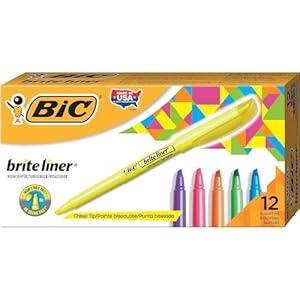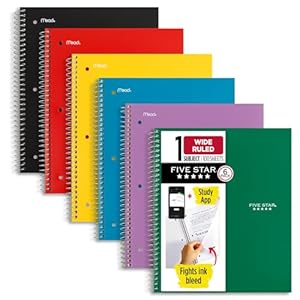Making Smarter Selections About Instruments Used In Faculties
Stroll into any classroom at the moment, and you’ll positively see some type of know-how getting used. From interactive whiteboards to apps that observe pupil progress in actual time, EdTech instruments have gotten a core a part of trendy colleges. This variation got here steadily however peaked in the course of the pandemic, when colleges needed to discover digital tools to maintain educating whereas college students had been studying from dwelling. In any other case, this might need taken years to undertake, however it turned fairly regular in only a few months.
Nonetheless, having extra EdTech instruments out there doesn’t imply colleges are getting higher outcomes. Actually, many faculties put money into software program or platforms which can be underused. Generally a software is not appropriate for various school rooms or grade ranges. Different instances, it would not match the curriculum or actually deal with the issues lecturers and college students face. There’s additionally a danger of selecting one thing simply because it is new and trending, with out contemplating the way it will assist you obtain your objectives. This results in wasted budgets, pissed off lecturers, and college students who get nothing in return.
Sponsored content material – article continues beneath
Trending Studying Administration Programs (LMS)
That is why smarter choice making round software investments has turn into so vital. A well-chosen software can enhance studying outcomes, save lecturers invaluable time, and assist colleges profit from their budgets. On the flip aspect, poor selections can waste sources and make it more durable for colleges to satisfy their objectives. Contemplating that instructional budgets are sometimes tight, making considerate selections is essential.
So, how can colleges begin making selections that basically repay? As a substitute of following developments, colleges can deal with what really works, what aligns with their wants, and what has an enduring influence on each educating and studying. Beneath, we’ll discover sensible methods colleges could make higher funding selections relating to EdTech instruments and assist them save their sources whereas specializing in pupil and trainer progress.
8 Suggestions That Assist Faculties Make investments In The Greatest Instruments
1. Understanding Faculty Wants
Earlier than selecting a brand new EdTech software, colleges must ask a easy query: What drawback are we attempting to unravel? Too typically, folks purchase a software as a result of it appears to be like cool, has nice advertising, or is being utilized in different colleges. However with out understanding the wants of scholars and lecturers, even essentially the most superior platform can find yourself unused. Step one is conducting a needs assessment. This implies taking time to determine the precise challenges taking place within the classroom. Are lecturers struggling to trace pupil progress? Do college students want additional help? Or perhaps there is a hole in communication between dwelling and college. Recognizing these issues helps you keep away from shopping for ineffective instruments and as an alternative decide those who really make a distinction to your faculty.
2. Evaluating EdTech Instruments
After deciding on a number of instruments in your faculty, you wish to be certain that they actually work. Subsequently, search for instruments which were examined in school rooms and proven to enhance studying. These are extra dependable than those that simply make guarantees by way of intelligent advertising. For this, you possibly can examine evaluations confirmed to be written by colleges which have examined the platform. These evaluations typically present each the professionals and cons of instruments, giving decision-makers a clearer view. It’s also vital to ask distributors for case research. A reliable firm ought to share examples of how its product has labored in precise school rooms, ideally with information. This builds belief and helps colleges perceive what utilizing the software would possibly seem like.
3. Involving Stakeholders
One of many largest errors colleges could make in relation to selecting the best instruments will not be together with all stakeholders within the decision-making course of. Why is that vital? As a result of a software would possibly look nice in a trial, but when it doesn’t really match into school rooms or help college students’ wants, it should probably find yourself unused. Lecturers, for instance, are those who can be utilizing these instruments each single day. They know what works in a busy classroom and what doesn’t. College students ought to have a say as properly. In spite of everything, if the software is supposed to assist them study, they should discover it partaking, accessible, and motivating. Mother and father additionally play an vital position. Many wish to perceive how a brand new software works or have the ability to see their kid’s progress. Lastly, IT groups and directors should share their opinions, too. They deal with the technical work, ensuring the software is safe and suitable with present methods.
4. Assessing Prices And ROI
When colleges take into consideration shopping for new instruments, the very first thing they typically take into account is the price. Whereas that is vital, it isn’t every little thing. The actual value of an EdTech software is commonly a lot greater than simply the preliminary worth. For example, lecturers want coaching and time to learn to use a brand new software. There are additionally prices for upkeep and software program updates, which might add up over time. Plus, app would possibly solely work on the most recent units and require sturdy Wi-Fi, which suggests additional bills. Subsequently, as an alternative of contemplating what this software prices now, colleges ought to take into account what it will value them through the years. Faculties must also take into consideration ROI. In training, ROI is in regards to the worth the software brings. Does it assist enhance pupil studying? Does it save lecturers time by lowering paperwork? These elements actually present whether or not an EdTech software is value the price.
5. Prioritizing Information Safety And Compliance
When selecting instruments, colleges should prioritize information privateness and safety. As we speak’s school rooms use digital platforms that acquire numerous info, together with pupil names, grades, assignments, and typically private particulars. Therefore, conserving this info protected is non-negotiable. Take into account, although, that totally different areas have particular information rules. Within the US, legal guidelines like FERPA defend pupil info, whereas COPPA focuses on kids’s on-line privateness. In Europe, colleges should take into account GDPR. These legal guidelines all emphasize that colleges must deal with pupil information with care. So, when selecting a software, ask distributors how they deal with information. You wish to know the way the knowledge is saved, whether or not it’s encrypted, or in the event that they share information with different firms. Defending pupil information additionally builds belief. Households anticipate colleges to maintain their kids protected within the classroom and on-line. By making safety and information safety a precedence, colleges present that pupil well-being is their high precedence.
6. Testing Packages
Launching a brand new EdTech software right away comes with dangers. Lecturers would possibly discover it too difficult, or college students may not interact with it as anticipated. For this reason pilot applications are useful, as they mean you can take a look at the software earlier than making a full dedication. A testing spherical helps colleges strive a software in actual school rooms with out spending an excessive amount of time or cash. You can begin with one grade, a single division, or only a few lecturers. This smaller group can deal with how simple the software is to make use of, discover any technical issues, and see if it really helps college students study. An important a part of the testing is gathering suggestions. Lecturers can share their experiences, and college students can say whether or not they discover the software useful or satisfying. You too can acquire measurable information, like pupil progress, engagement ranges, or time saved on admin duties, to see if the software does what it guarantees.
7. Providing Coaching
Irrespective of how nice a platform or app is, if a trainer cannot combine it into their classes, college students will not profit, and the software turns into of no use. That is why ongoing teacher training is important. Lecturers want sensible assist that enables them to discover the software at their very own tempo, make errors, and study from them. Peer studying, the place lecturers share suggestions and insights with one another, may also help by making a supportive setting that builds confidence. When lecturers know they will ask questions and get recommendation, they’re extra probably to make use of the software successfully. Additionally, providing lecturers software tutorials, 24/7 sources, and ongoing coaching for related applied sciences has the potential to show them into consultants about these instruments.
8. Constantly Monitoring
Investing in an EdTech software requires ongoing consideration. Even the very best platforms can lose their effectiveness if not frequently checked. Begin by setting clear KPIs, akin to pupil efficiency, how typically lecturers use the software, and engagement metrics. These will assist you understand if the software is bettering pupil studying and serving to lecturers. After you have these KPIs, assess them frequently. Simply because a software labored properly final yr does not imply it should nonetheless meet your faculty’s wants. Curricula change, know-how advances, and what labored for one group of scholars may not work for one more. Subsequently, checking in each few months or a minimum of every semester may also help you consider if the software continues to be invaluable. Within the case {that a} software is not performing as anticipated, take into account altering the way it’s used, offering extra coaching, or eradicating it solely. You do not have to maintain instruments simply since you paid for them. The aim is to make sure each funding actively helps studying, relatively than simply sitting there unused.
Conclusion
When colleges select EdTech instruments the appropriate method, everybody wins, together with college students, lecturers, directors, and even mother and father. The aim is for know-how to help studying, not create additional complications. Consider EdTech as a long-term funding that requires care, planning, and endurance however pays off sooner or later. Do not forget that colleges that target considerate, strategic adoption have instruments that actually improve training and make life simpler for lecturers and college students.
Trending Merchandise










